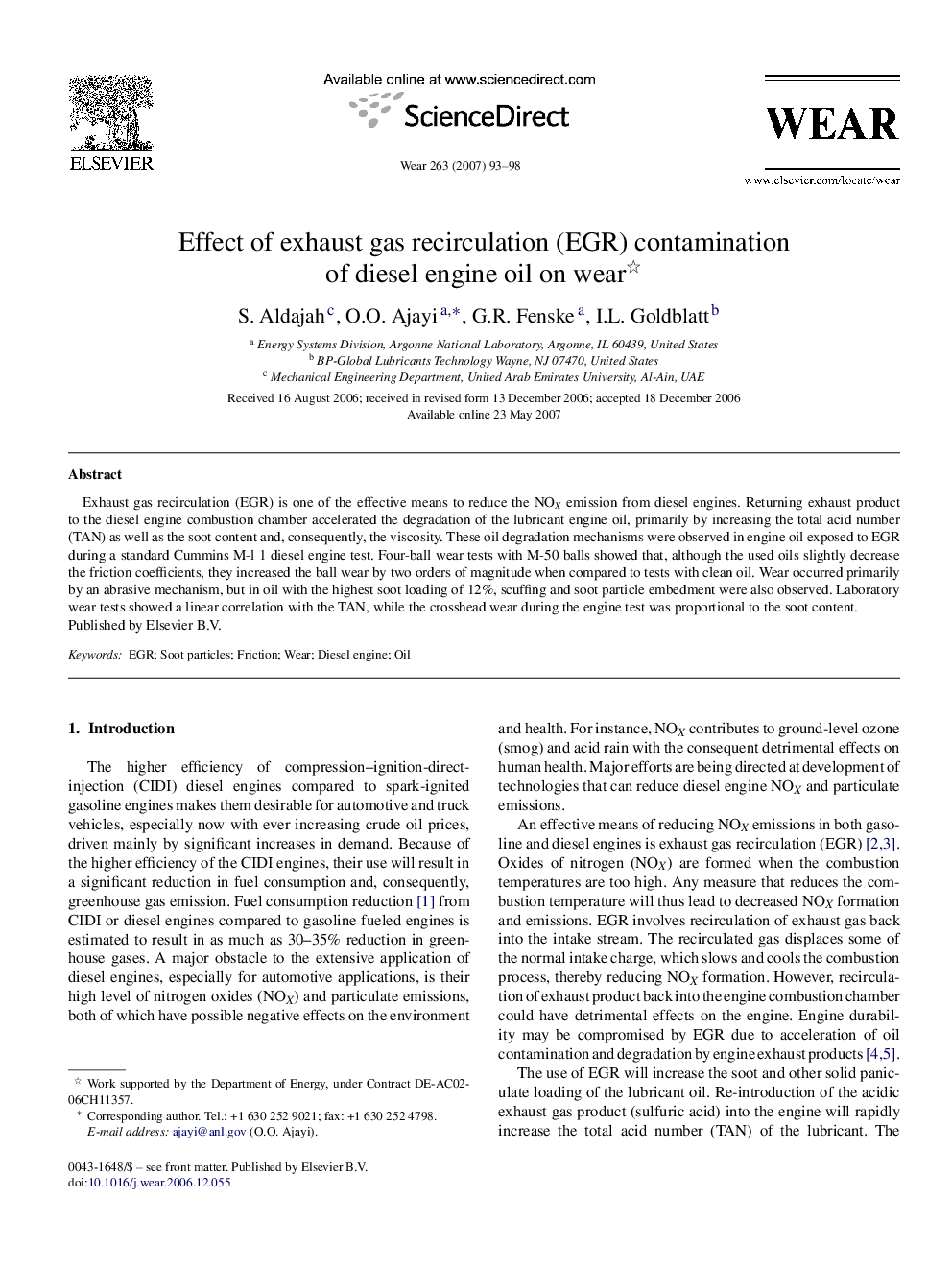| Article ID | Journal | Published Year | Pages | File Type |
|---|---|---|---|---|
| 619804 | Wear | 2007 | 6 Pages |
Exhaust gas recirculation (EGR) is one of the effective means to reduce the NOX emission from diesel engines. Returning exhaust product to the diesel engine combustion chamber accelerated the degradation of the lubricant engine oil, primarily by increasing the total acid number (TAN) as well as the soot content and, consequently, the viscosity. These oil degradation mechanisms were observed in engine oil exposed to EGR during a standard Cummins M-l 1 diesel engine test. Four-ball wear tests with M-50 balls showed that, although the used oils slightly decrease the friction coefficients, they increased the ball wear by two orders of magnitude when compared to tests with clean oil. Wear occurred primarily by an abrasive mechanism, but in oil with the highest soot loading of 12%, scuffing and soot particle embedment were also observed. Laboratory wear tests showed a linear correlation with the TAN, while the crosshead wear during the engine test was proportional to the soot content.
